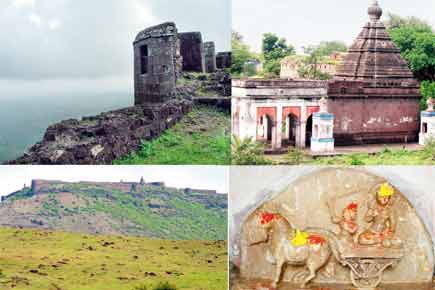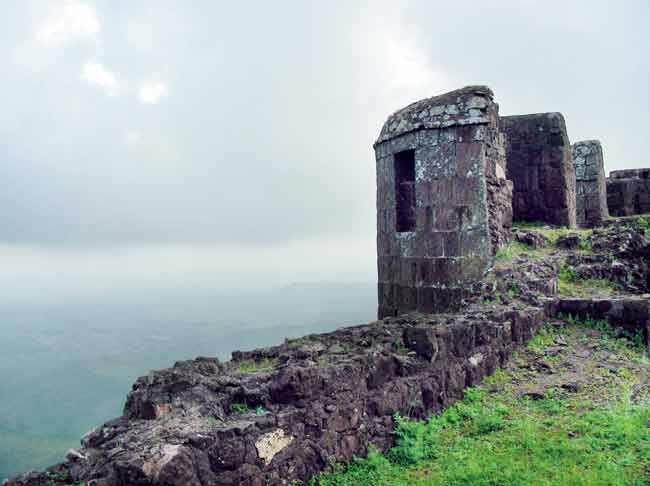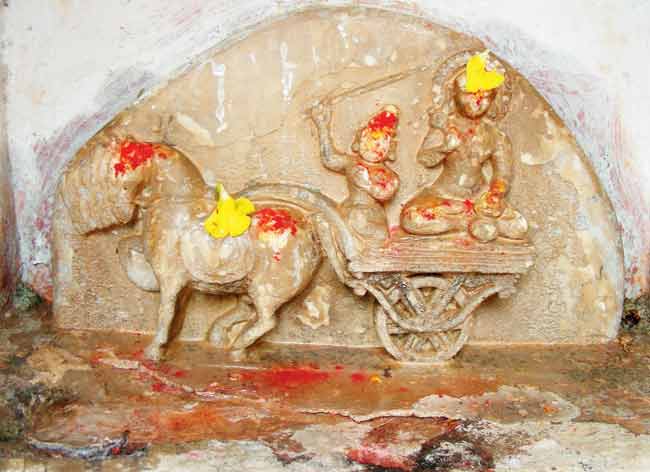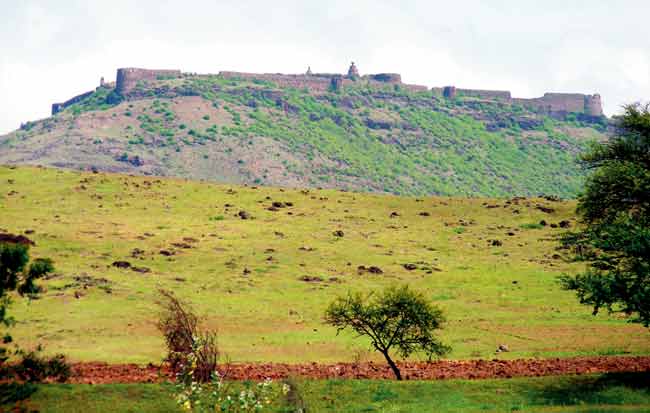Located just 30 km away from Pune city, Fort Malhargad is the youngest built fort in the Maratha empire, and also one of the less explored forts near the city. the guide takes a stroll around the fort to find out more about its historical significance

Malhargad
Located near Sonori Village on Pune-Saswad Road, Fort Malhargad is the youngest-built fort of the Maratha empire. Named after Lord Malhari (also known as Khandoba), an avatar of Shiva, this was the last fort built under the rule of the Peshwas.
ADVERTISEMENT

View from a buruj of the fort
According to Bharat Iitihas Sanshodhak Mandal, the fort was built by Peshwa sardars Krishnaji Madhavrao Panse and Bhivrao Yashvant. Panse was the chief in-charge of Tofkhana (artillery) of the Peshwas from 1757 to 1760. The last rulers of this fort were the British, who won the fort from the Peshwas in 1820.

Vishnu Panchayatan Temple inside the Malhargad Fort. Pics/Pranav Pawar
When we reached the site, the first thing that we noticed was the fort’s triangular shape. Starting from the fort’s base, it takes approximately one hour to see the entire fort.
The entrance gate of the fort can’t be seen until one reaches the top of the hill. Here, we realised that the entrance gate, which faces the north, is exactly on the opposite side of the way to reach the fort, which faces the south. Such technique, we are told, was used to prevent any direct entry of the enemy in case of a war-like situation.

A temple of the Sun God inside the Malhargad Fort
The fort also has a ‘nedha’, a naturally created hole in the bastions (buruj). You can have a beautiful view of the valley from the nedha. During our climb to the top of the fort, we came across a well. Several such small wells are still used for farming in nearby villages, we were informed.

The Malhargad Fort from a distance
The fort’s location on the Pune-Saswad Road gives it a strategic benefit, allowing one to keep an eye on the entire range of hills — all the way from Sinhgad to Katraj, Malhargad and the Bhuleshwar Temple near Yavat village on the Pune-Solapur Highway. The fort is also visible from Theur, located on Pune-Solapur Road. Citations to the fort can be found in historical documents on Madhavrao Peshwa, the fourth Peshwa of the Maratha Empire. Under his Peshwaship, Maratha power recovered from the losses suffered during the Panipat Campaign during his tenure.
The base of the fort has a Gadhi (palace) where Sardar Panase used to live, we were informed. The gadhi has six bastions (buruj), two doors, and one temple of Vishnu Panchayatan.
The fort has two doors — the first door has guard rooms, merlons (places for gun firing) and embrasures (for firing heavy artillery).
The fort also has traces of old grinders, which it’s believed, might have been used to create a building mix of limelight, stone crush, etc. Another interesting aspect of Malhargad Fort is Bale Killa (a fort within fort). This structure is used to offer protection from the enemy, if they enter the fort forcefully.
Bale Killa also has the same opposite side facing entry door, similar to the main fort. Inside, there too, there is a deep step well in the southern direction. Bale Killa also has two temples, one each of Lord Shiva and Lord Khandoba.
 Subscribe today by clicking the link and stay updated with the latest news!" Click here!
Subscribe today by clicking the link and stay updated with the latest news!" Click here!






